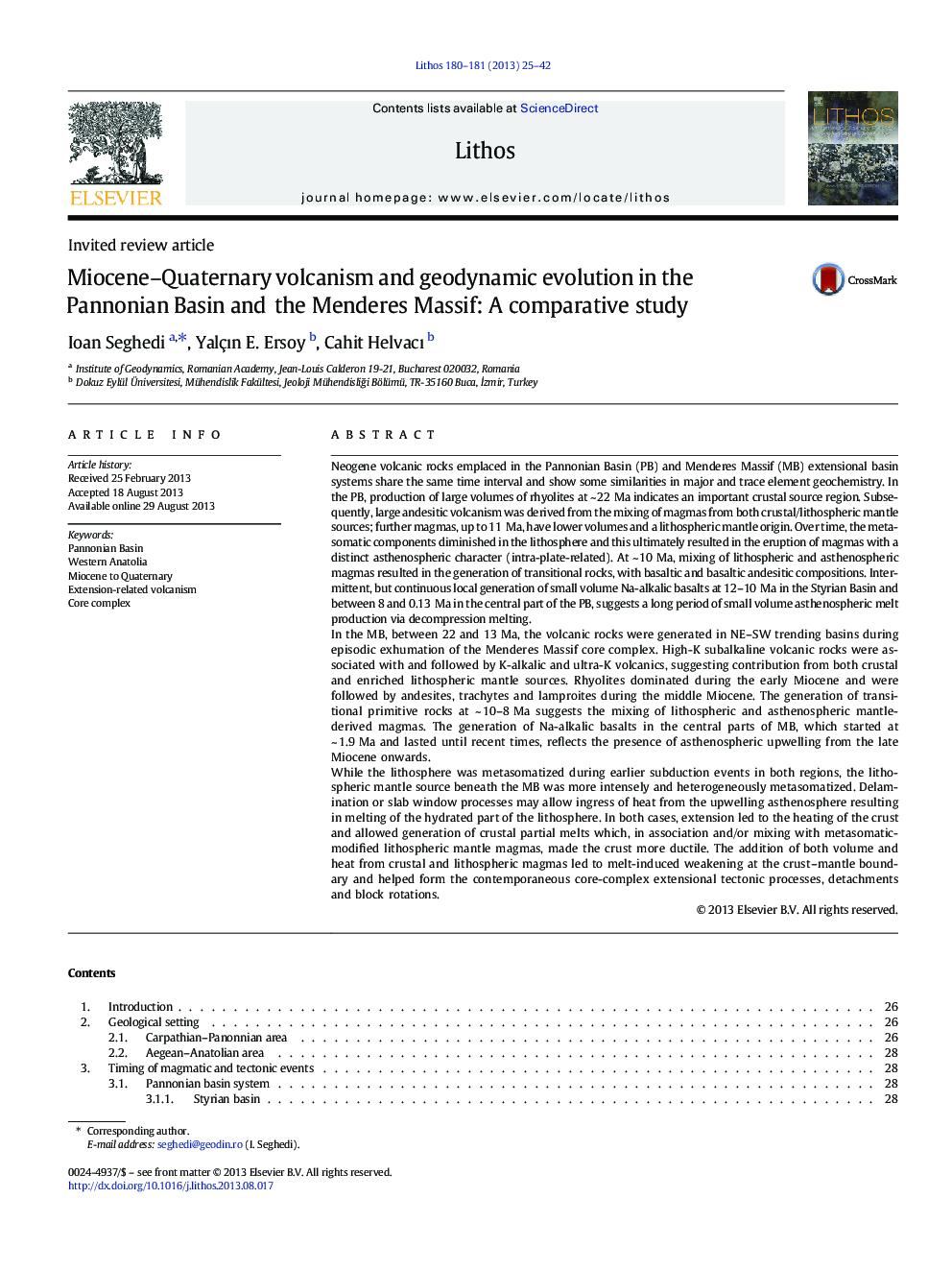| Article ID | Journal | Published Year | Pages | File Type |
|---|---|---|---|---|
| 4716155 | Lithos | 2013 | 18 Pages |
•Miocene-recent volcanic rock geochemistry is used to discuss the tectonic setting.•Pannonian and Menders Massif basin post-collisional magmatism is compared.•Sub-alkaline, K-alkalic, UK and Na-alkalic associations mirror primary sources.•In time, melting in the lithosphere decreases and followed by asthenosphere melting.•Transitional basalts imply a shift from the lithosphere to asthenosphere sources.
Neogene volcanic rocks emplaced in the Pannonian Basin (PB) and Menderes Massif (MB) extensional basin systems share the same time interval and show some similarities in major and trace element geochemistry. In the PB, production of large volumes of rhyolites at ~ 22 Ma indicates an important crustal source region. Subsequently, large andesitic volcanism was derived from the mixing of magmas from both crustal/lithospheric mantle sources; further magmas, up to 11 Ma, have lower volumes and a lithospheric mantle origin. Over time, the metasomatic components diminished in the lithosphere and this ultimately resulted in the eruption of magmas with a distinct asthenospheric character (intra-plate-related). At ~ 10 Ma, mixing of lithospheric and asthenospheric magmas resulted in the generation of transitional rocks, with basaltic and basaltic andesitic compositions. Intermittent, but continuous local generation of small volume Na-alkalic basalts at 12–10 Ma in the Styrian Basin and between 8 and 0.13 Ma in the central part of the PB, suggests a long period of small volume asthenospheric melt production via decompression melting.In the MB, between 22 and 13 Ma, the volcanic rocks were generated in NE–SW trending basins during episodic exhumation of the Menderes Massif core complex. High-K subalkaline volcanic rocks were associated with and followed by K-alkalic and ultra-K volcanics, suggesting contribution from both crustal and enriched lithospheric mantle sources. Rhyolites dominated during the early Miocene and were followed by andesites, trachytes and lamproites during the middle Miocene. The generation of transitional primitive rocks at ~ 10–8 Ma suggests the mixing of lithospheric and asthenospheric mantle-derived magmas. The generation of Na-alkalic basalts in the central parts of MB, which started at ~ 1.9 Ma and lasted until recent times, reflects the presence of asthenospheric upwelling from the late Miocene onwards.While the lithosphere was metasomatized during earlier subduction events in both regions, the lithospheric mantle source beneath the MB was more intensely and heterogeneously metasomatized. Delamination or slab window processes may allow ingress of heat from the upwelling asthenosphere resulting in melting of the hydrated part of the lithosphere. In both cases, extension led to the heating of the crust and allowed generation of crustal partial melts which, in association and/or mixing with metasomatic-modified lithospheric mantle magmas, made the crust more ductile. The addition of both volume and heat from crustal and lithospheric magmas led to melt-induced weakening at the crust–mantle boundary and helped form the contemporaneous core-complex extensional tectonic processes, detachments and block rotations.
